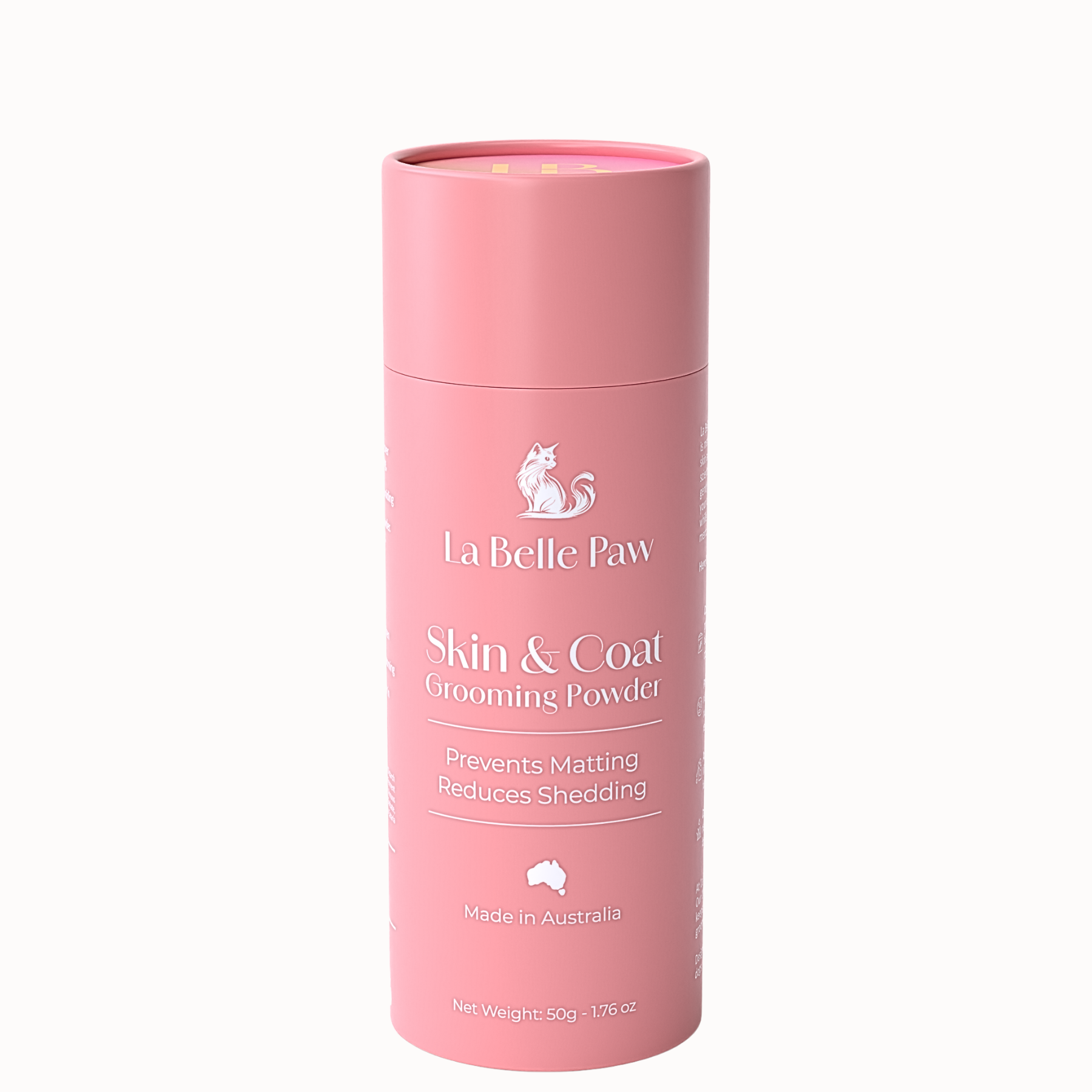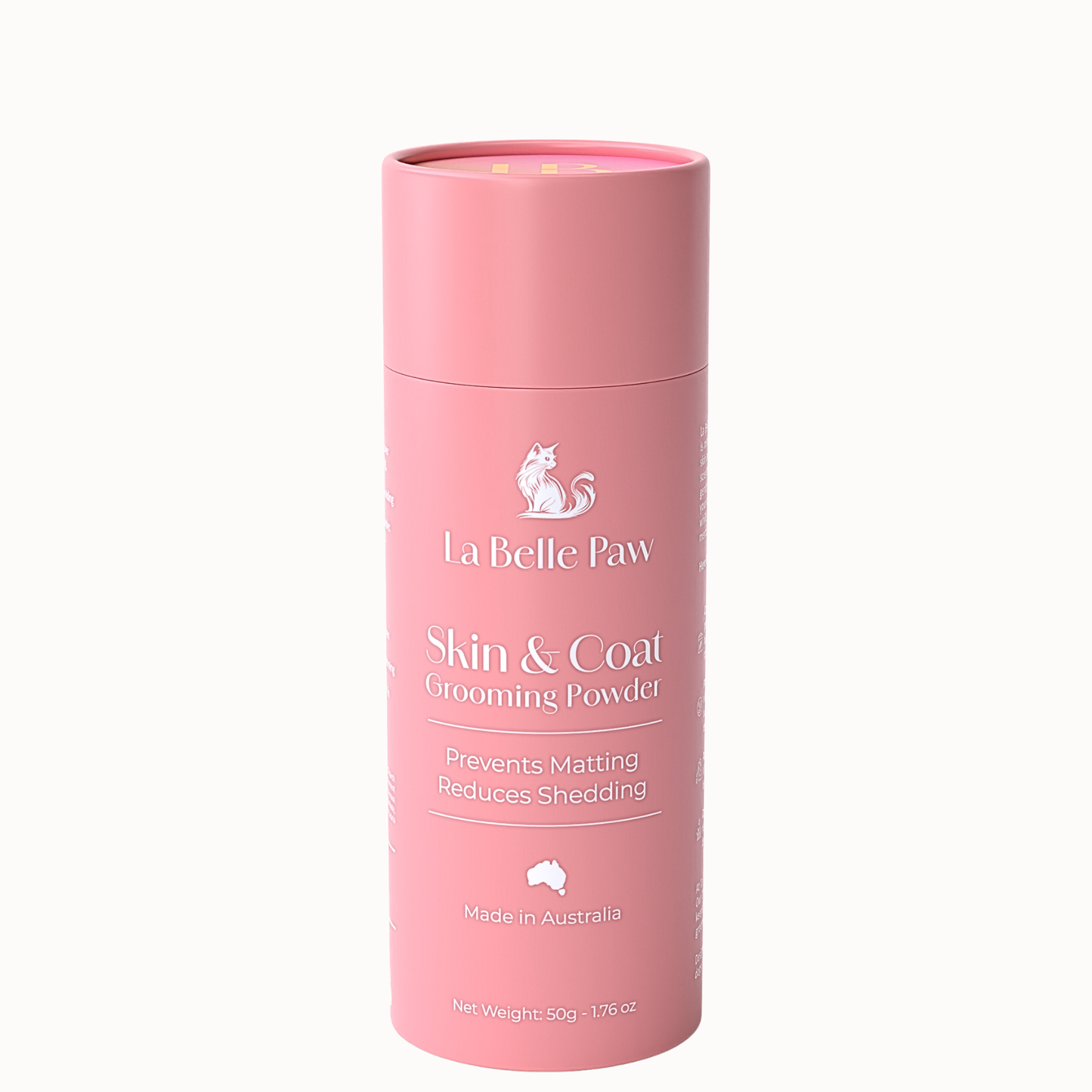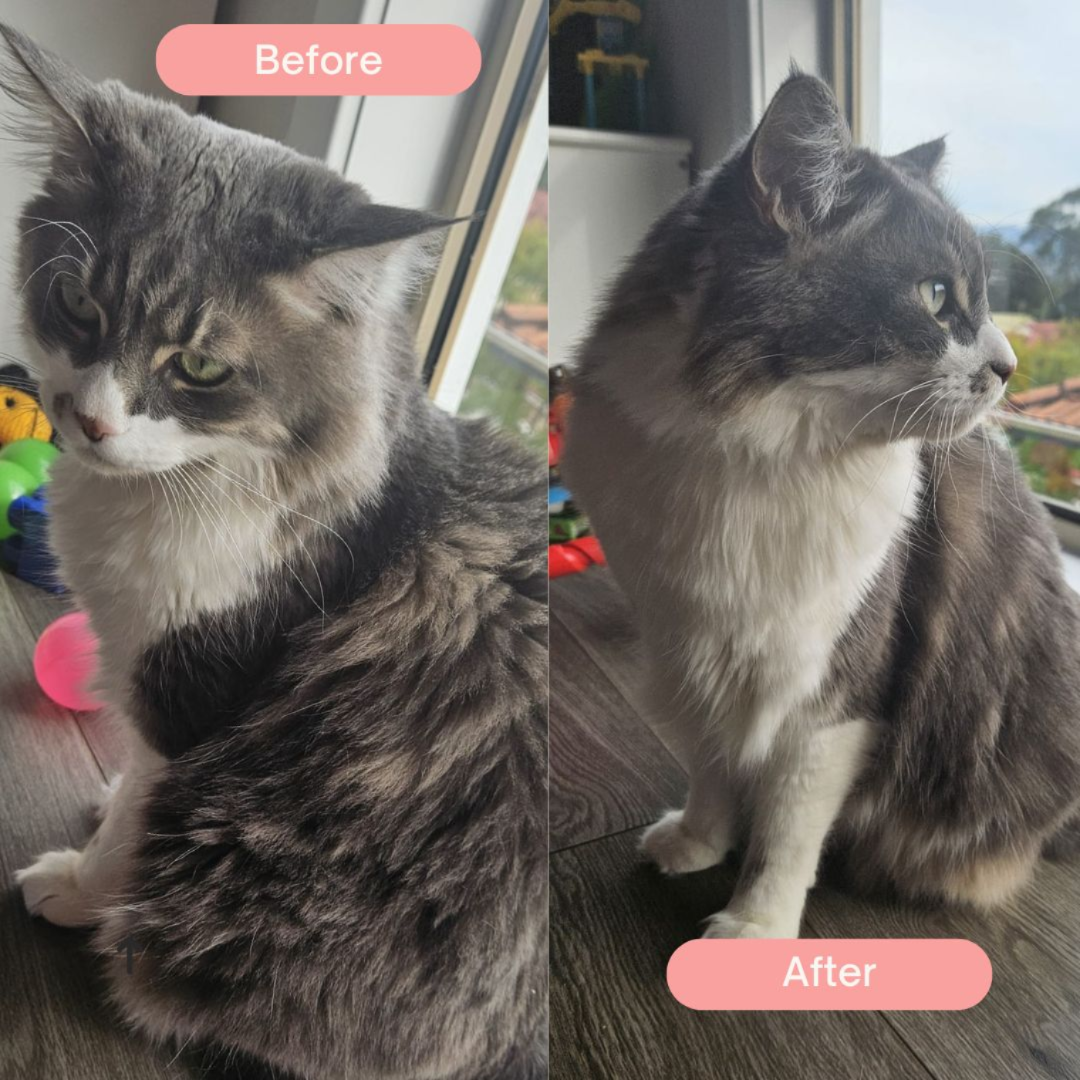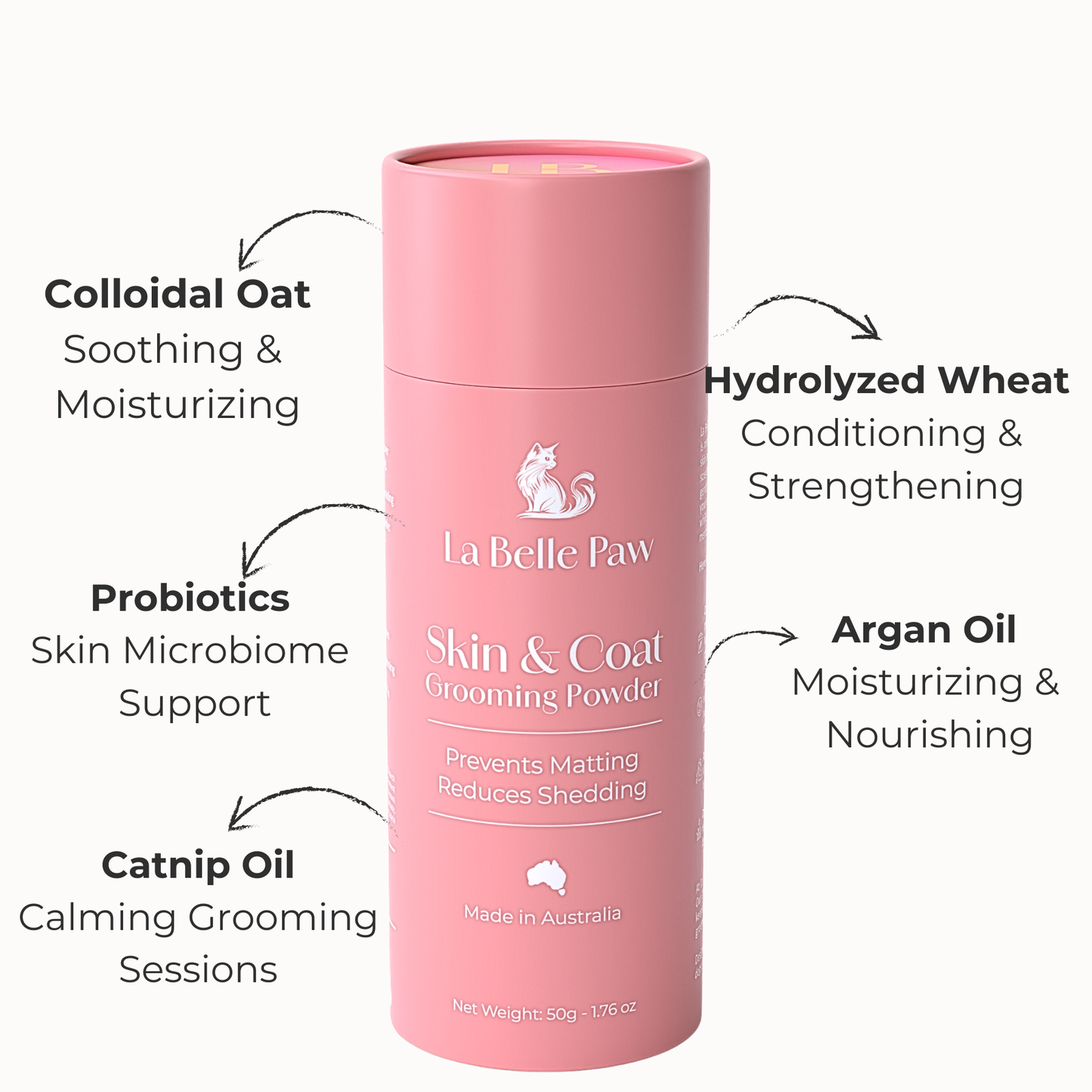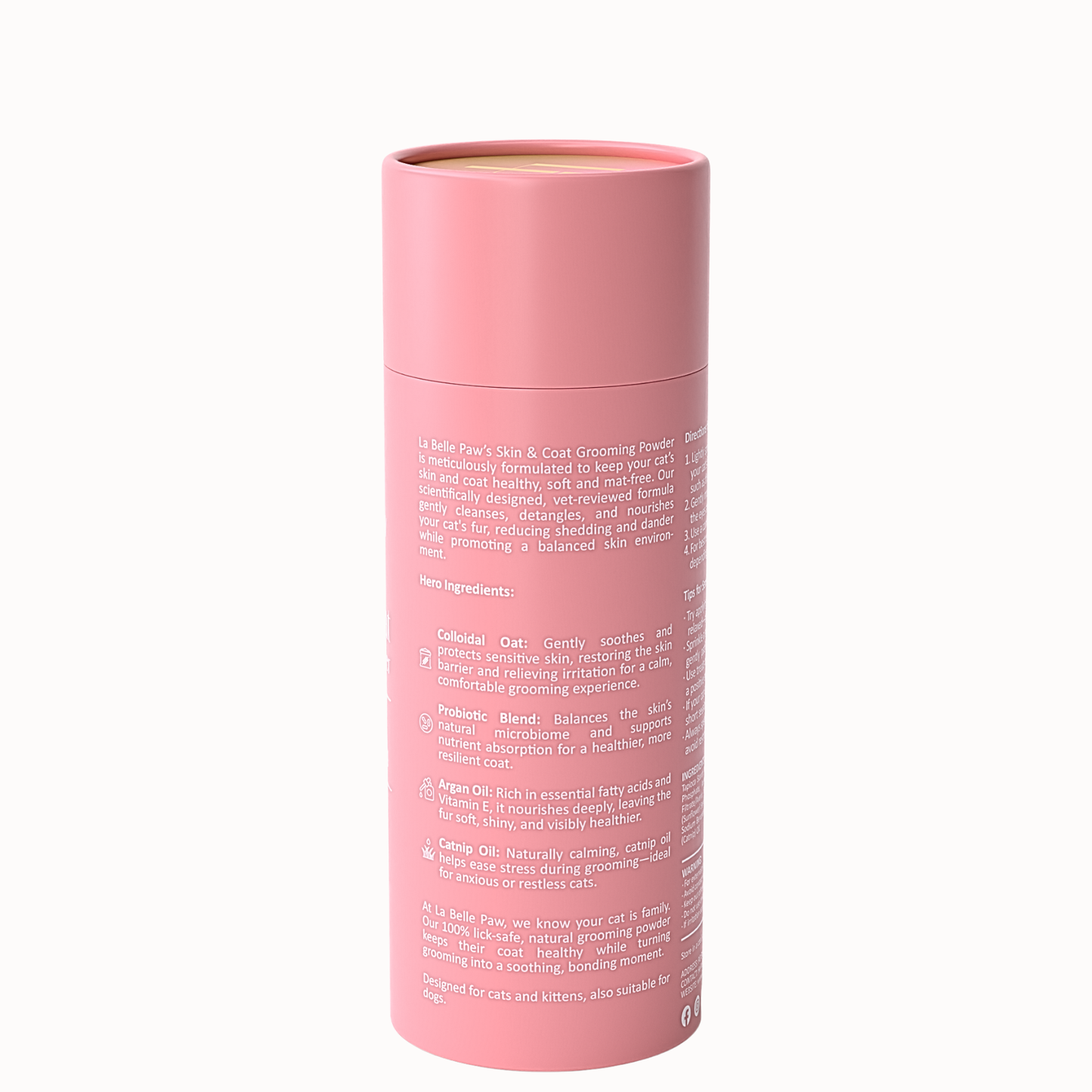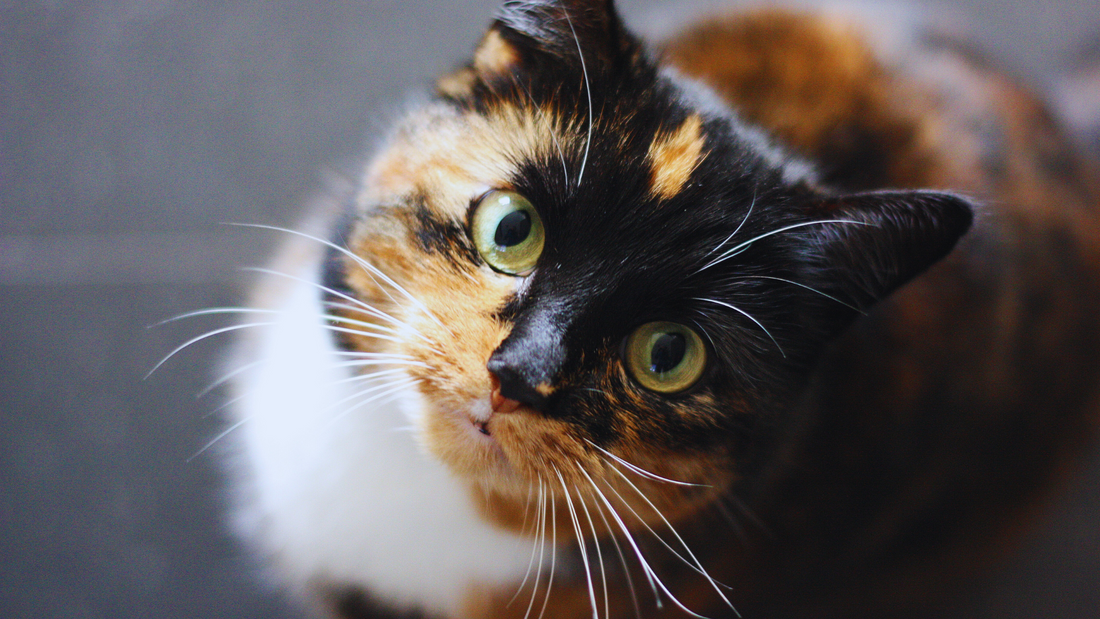
What causes Cat Dandruff?
Share
Cats are known for their impeccable grooming habits, often spending a significant portion of their day maintaining their sleek and shiny coats. However, when those coats become speckled with white flakes, it can be a cause for concern. Let's dive into the world of cat dandruff, exploring its causes, identifying its symptoms, and uncovering effective solutions, including the advantages of using specialized skin and coat grooming powders.
What Exactly Is Cat Dandruff?
Cat dandruff refers to the visible white flakes of dead skin that appear on your feline's fur and skin. It's akin to the dandruff humans experience and can be accompanied by dryness and itchiness. While a small amount of dandruff can be normal, an excessive presence may indicate underlying health issues.
Is It Dandruff or Dander?
It's essential to distinguish between dandruff and dander. Dander consists of microscopic dead skin cells shed naturally and is a common allergen for humans. Dandruff, on the other hand, is visible to the naked eye and often signals a problem with your cat's skin health.
Why Does My Cat Have Dandruff?
Several factors can contribute to the development of dandruff in cats:
1. Obesity
Overweight cats may struggle to groom themselves effectively, leading to a buildup of dead skin cells and subsequent dandruff.
2. Poor Nutrition
A diet lacking essential nutrients, particularly omega-3 and omega-6 fatty acids, can result in dry, flaky skin.
3. Environmental Factors
Dry air, especially during winter months, can dehydrate your cat's skin, leading to flakiness.
4. Parasites and Infections
External parasites like fleas or mites, as well as fungal or bacterial infections, can irritate the skin and cause dandruff.
5. Allergies
Allergic reactions to food, environmental factors, or grooming products can manifest as skin issues, including dandruff.
6. Underlying Health Conditions
Diseases such as diabetes, hyperthyroidism, or kidney disease can affect skin health, leading to dandruff.
How Can I Tell If My Cat Has Dandruff?
Identifying dandruff in cats involves observing the following signs:
-
Visible White Flakes: Noticeable on the fur, bedding, or areas where your cat frequently rests.
-
Dry or Red Patches: The skin may appear dry, inflamed, or irritated.
-
Excessive Scratching or Grooming: Your cat may scratch or lick more than usual due to itchiness.
-
Hair Loss: In severe cases, dandruff can lead to patches of hair loss.
How Do I Get Rid of My Cat's Dandruff?
Addressing cat dandruff requires a multifaceted approach:
1. Improve Diet
Ensure your cat's diet is rich in essential nutrients, particularly omega-3 and omega-6 fatty acids, which promote skin health.
2. Regular Grooming
Brushing your cat helps remove dead skin cells and stimulates natural oil production, keeping the skin moisturized.
3. Hydration
Encourage your cat to drink plenty of water to maintain skin hydration.
4. Humidify the Environment
Using a humidifier can add moisture to the air, preventing your cat's skin from becoming too dry.
5. Parasite Control
Regular use of veterinarian-recommended flea and tick preventatives can reduce the risk of infestations that cause skin irritation.
6. Veterinary Consultation
If dandruff persists or is accompanied by other symptoms, consult your veterinarian to rule out underlying health issues.
Can I Use Grooming Powder on My Cat?
Grooming powders can be beneficial for maintaining your cat's coat, but it's crucial to choose products specifically formulated for felines. Some powders, especially those containing talc, can be harmful if ingested during grooming. Always opt for pet-safe, vet-approved grooming powders.
Benefits of Skin and Coat Grooming Powder
Incorporating a specialized skin and coat grooming powder into your cat's grooming routine can offer several advantages:
1. Moisturizes the Skin
High-quality grooming powders often contain ingredients that help retain moisture, combating dryness and flakiness.
2. Enhances Coat Appearance
These powders can add a healthy shine to your cat's fur, making it look vibrant and well-maintained.
3. Reduces Odor
Grooming powders can help neutralize odors, keeping your cat smelling fresh between baths.
4. Eases Grooming Process
They can make brushing easier by reducing static and detangling fur, leading to a more pleasant experience for both you and your cat.
5. Provides Itch Relief
Some formulations include soothing agents that alleviate itchiness, reducing excessive scratching and potential skin damage.
Conclusion
Cat dandruff, while often a minor issue, can sometimes signal underlying health concerns. By understanding its causes and implementing appropriate care strategies—including the use of specialized grooming powders—you can ensure your feline friend maintains a healthy, lustrous coat. Regular grooming, a balanced diet, and a nurturing environment are key components in promoting your cat's overall well-being.


